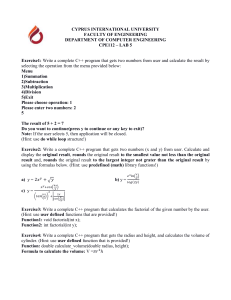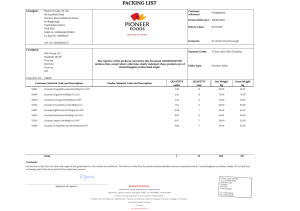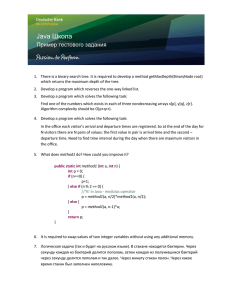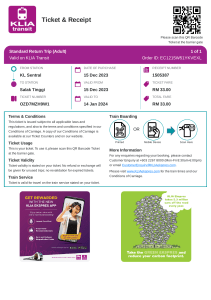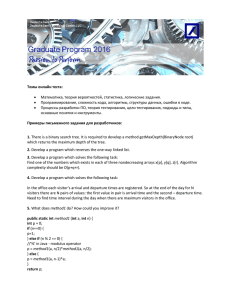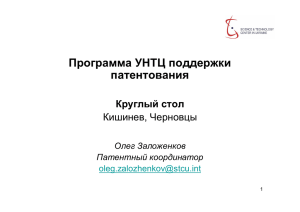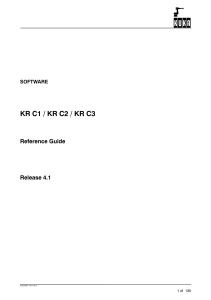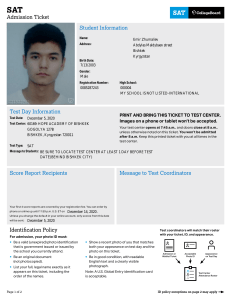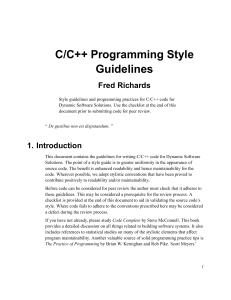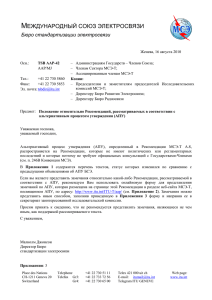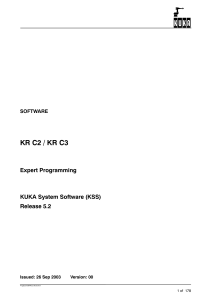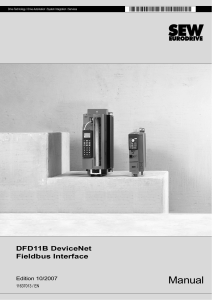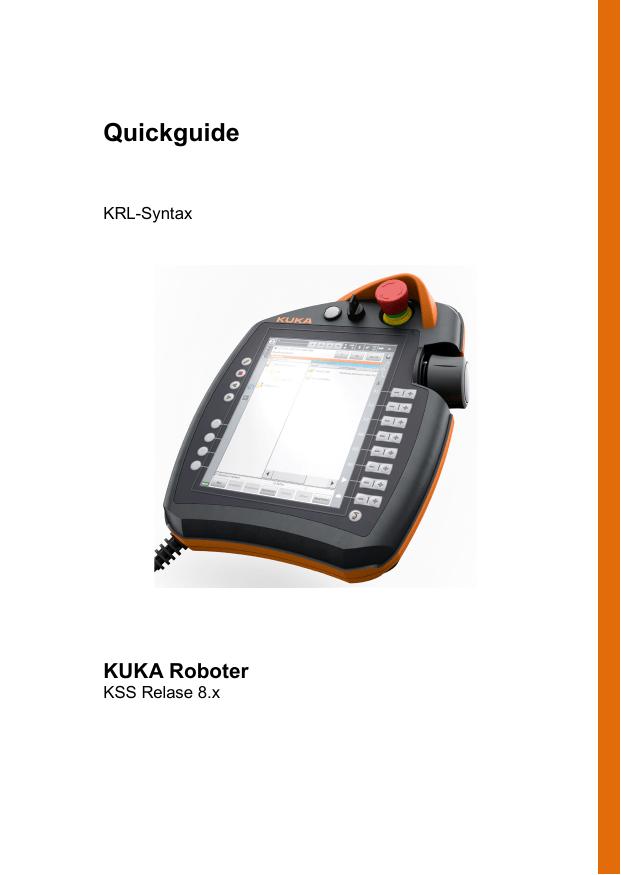
Quickguide
KRL-Syntax
KUKA Roboter
KSS Relase 8.x
© Copyright 2012
KUKA Roboter GmbH
Zugspitzstraße 140
D-86165 Augsburg
Diese Dokumentation darf – auch auszugsweise – nur mit ausdrücklicher Genehmigung des
Herausgebers vervielfältigt oder Dritten zugänglich gemacht werden.
Es können weitere, in dieser Dokumentation nicht beschriebene Funktionen in der Steuerung
lauffähig sein. Es besteht jedoch kein Anspruch auf diese Funktionen bei Neulieferung bzw. im
Servicefall.
Wir haben den Inhalt der Druckschrift auf Übereinstimmung mit der beschriebenen Hard- und
Software geprüft. Dennoch können Abweichungen nicht ausgeschlossen werden, so dass wir für die
vollständige Übereinstimmung keine Gewähr übernehmen. Die Angaben in dieser Druckschrift
werden jedoch regelmäßig überprüft, und notwendige Korrekturen sind in den nachfolgenden
Auflagen enthalten.
Technische Änderungen ohne Beeinflussung der Funktion vorbehalten.
Die KUKA Roboter GmbH übernimmt keinerlei Haftung für etwaige Fehler in technischen
Informationen, die in den Schulungen mündlich oder schriftlich übermittelt werden oder in den
Unterlagen enthalten sind. Ebenso wird keine Haftung für daraus resultierende Schäden und
Folgeschäden übernommen.
Verantwortlich für diese Schulungsunterlage: College Development (WSC-IC)
This documentation or excerpts therefrom may not be reproduced or disclosed to third parties without
the express permission of the publishers.
Other functions not described in this documentation may be operable in the controller. The user has
no claims to these functions, however, in the case of a replacement or service work.
We have checked the content of this documentation for conformity with the hardware and software
described. Nevertheless, discrepancies cannot be precluded, for which reason we are not able to
guarantee total conformity. The information in this documentation is checked on a regular basis,
however, and necessary corrections will be incorporated in subsequent editions.
Subject to technical alterations without an effect on the function.
KUKA Roboter GmbH accepts no liability whatsoever for any errors in technical information
communicated orally or in writing in the training courses or contained in the documentation. Nor will
liability be accepted for any resultant damage or consequential damage.
Responsible for this training documentation: College Development
KUKA Roboter GmbH, Hery-Park 3000, D-86368 Gersthofen, Tel.: +49 821 4533-1906, Fax: +49 821 4533-2340
© Copyright KUKA Roboter GmbH – College
Contents – KRL Syntax
Contents – KRL Syntax
Contents – KRL Syntax .............................................................. 1
Variables and declarations ......................................................... 3
Declaration and initialization of variables: ............................ 3
Simple data types – INT, REAL, BOOL, CHAR ................... 4
Arrays ................................................................................... 4
Structures – STRUC ............................................................ 5
Enumeration type – ENUM .................................................. 6
Data manipulation ...................................................................... 7
Arithmetic operators ............................................................. 7
Geometric operator .............................................................. 7
Relational operators ............................................................. 7
Logic operators .................................................................... 8
Bit operators ......................................................................... 8
Priority of operators .............................................................. 8
Motion programming .................................................................. 9
Coordinate systems ............................................................. 9
Status and Turn ................................................................. 10
Point-to-point motions (PTP) .............................................. 10
CP motions (LIN and CIRC) ............................................... 11
Computer advance run ...................................................... 12
Orientation control with linear motions ............................... 13
Orientation control with circular motions ............................ 13
Program execution control ....................................................... 14
General information regarding loops .................................. 14
Conditional branch IF/THEN/ELSE .................................... 14
Switch statements SWITCH/CASE .................................... 15
Jump statement GOTO ...................................................... 15
Counting loop FOR ............................................................ 16
Rejecting loop WHILE ........................................................ 16
Non-rejecting loop REPEAT .............................................. 16
Endless loop LOOP ........................................................... 17
Waiting for an event WAIT FOR ........................................ 18
Wait times WAIT SEC ........................................................ 18
Stopping the program ........................................................ 19
07.12.00 en
1/44
Contents – KRL Syntax
Inputs/outputs ........................................................................... 20
Binary inputs/outputs ......................................................... 20
Digital inputs/outputs – signal declaration .......................... 20
Pulse outputs ..................................................................... 21
Analog inputs/outputs ........................................................ 21
Subprograms and functions ..................................................... 23
Local subprograms: ........................................................... 23
Global subprograms: .......................................................... 23
Functions:........................................................................... 23
Interrupt programming .............................................................. 24
Stopping active motions ..................................................... 25
Canceling interrupt routines ............................................... 26
Trigger – path-related switching actions................................... 27
Switching functions at the start or end point of a path ....... 27
Switching function at any point on the path ....................... 28
Message programming ............................................................. 29
Message properties............................................................ 29
Generating a message ....................................................... 31
Generating dialogs ............................................................. 32
Programming examples ..................................................... 35
Important system variables ...................................................... 41
Timers ................................................................................ 41
Flags and cyclical flags ...................................................... 41
Overview ............................................................................ 42
Registry entries ........................................................................ 44
2/44
07.12.00 en
Variables and declarations
Variables and declarations
Names in KRL:
can have a maximum length of 24 characters.
can consist of letters (A - Z), numbers (0 - 9) and the special
characters '_' and '$'.
must not begin with a number.
must not be a keyword.
As all system variables begin with the ‘$’ sign, this
sign should not be used as the first character in
user-defined names.
Declaration and initialization of variables:
Variables (simple and complex) must be declared in the SRC file
before the INI line and initialized after the INI line.
Variables can optionally also be declared and initialized in a local
or global data list.
In order to place syntax before the INI line, the DEF line must be
activated:
Open file > Edit > View > DEF line
The declaration and initialization in local and global
data lists must be located in one line.
Syntax:
DECL Data_Type Variable_Name
Example: DECL INT Counter ; Declaration
INI
Counter = 5
; in the *.src file
or
DECL INT Counter = 5
; in the *.dat file
07.12.00 en
3/44
Variables and declarations
Simple data types – INT, REAL, BOOL, CHAR
Data type
Integer
Real
Boolean
Keyword
INT
REAL
BOOL
Meaning
Integer
Range of
values
Example
Character
CHAR
FloatingLogic state
point number
1 character
-2 … 2 -1
±1.1E-38 …
±3.4E+38
TRUE,
FALSE
ASCII
characters
32
1.43
TRUE
“A”
31
31
Arrays
Arrays in KRL:
Arrays are used to group objects of the same data type to form a
data object.
An array may be of any data type.
The index always starts at 1.
Only the data type Integer is allowed for the index.
Besides constants and variables, arithmetic expressions are also
allowed for assigning values to array elements.
Syntax:
DECL
Data_Type Variable_Name[No_of_Array_Elements]
Value assignment: Variable_Name[Array_Index] = Value
Example: DECL REAL Measurement[5];Declaration of a REAL array
;“Measurement” with five array elements
Measurement[3] = 7.23
;Value assignment for the third
;array element in the Measurement array
4/44
07.12.00 en
Variables and declarations
In the case of multidimensional arrays, the number
of array elements is separated off by commas.
A maximum of 3 dimensions are possible.
Example: DECL BOOL Matrix[2,4];Declaration of the 2-dimensional
Matrix[1,2] = TRUE
;Boolean array “Matrix”
;Value assignment for the
;2-dimensional array element [1,2]
Structures – STRUC
Structures in KRL:
A structure is a combination of different data types.
A structure is initialized by means of an aggregate (not all the
parameters have to be specified).
A structure element can be initialized with a point separator or an
aggregate.
The order of the parameters is insignificant.
Syntax: STRUC Structure name Data_Type1 A, B, Data_Type2 C, D …
Example of a predefined structure:
STRUC E6POS REAL X, Y, Z, A, B, C, E1, E2, E3,
E4, E5, E6, INT S, T
Example of value assignments with point separator and aggregate:
DECL POS Position
;Declaration of the variable
;“Position” of type POS
Position.X = 34.4 ;Value assignment for the X
;component with the point separator
Position.Y = value ;Value assignment for the Y
;component with the point separator
Position = {X 34.4, Y -23.2} ;Value assignment with
;variables not possible
07.12.00 en
5/44
Variables and declarations
Enumeration type – ENUM
Enumeration type in KRL:
Each constant may only occur once in the definition of the
enumeration type.
The constants are freely definable names.
An ENUM variable can only take on the values of its constants.
In the value assignment, a # sign must always be placed before
the constant.
Syntax:
ENUM Enumeration_Type_Name Constant_1, Constant_n
Example of a predefined enumeration type:
ENUM MODE_OP T1, T2, AUT, EX, INVALID
Example: ENUM Form Straight, Angle, T_Piece, Star
;Declaration
;of the enumeration type “Form”
DECL Form Part
;Declaration of the variable PART of
;type Form
Part = #Straight
;Value assignment for the
;enumeration type “Form”
6/44
07.12.00 en
Data manipulation
Data manipulation
Arithmetic operators
Operator
Description
+
Addition or positive sign
Subtraction or negative sign
*
Multiplication
/
Division
Operands
INT
REAL
INT
INT
REAL
REAL
REAL
REAL
Geometric operator
The geometric operator “:” performs frame linkage.
Left operand
(reference CS)
POS
POS
FRAME
FRAME
Operator
:
:
:
:
Relational operators
Operator
Description
==
equal to
<>
not equal to
>
greater than
<
less than
greater than or
>=
equal to
less
than or
<=
equal to
Right operand
(target CS)
POS
FRAME
POS
FRAME
Result
POS
FRAME
POS
FRAME
Permissible data types
INT, REAL, CHAR, ENUM, BOOL
INT, REAL, CHAR, ENUM, BOOL
INT, REAL, CHAR, ENUM
INT, REAL, CHAR, ENUM
INT, REAL, CHAR, ENUM
INT, REAL, CHAR, ENUM
07.12.00 en
7/44
Data manipulation
Logic operators
Operator
NOT
AND
OR
EXOR
Bit operators
Operator
B_NOT
B_AND
B_OR
B_EXOR
Operand number
1
2
2
2
Description
Inversion
Logic AND
Logic OR
Exclusive OR
Operand number
1
2
2
2
Description
Inversion (bit-by-bit)
AND (bit-by-bit)
OR (bit-by-bit)
Exclusive OR (bit-by-bit)
Priority of operators
Priority
Operator
1 high
NOT
B_NOT
2
*
/
3
+
-
4
AND
B_AND
5
EXOR
B_EXOR
6
OR
B_OR
7 low
==
<>
<
>
>=
<=
The following applies to all operators in KRL:
Bracketed expressions are processed first.
Non-bracketed expressions are evaluated in
the order of their priority.
Logic operations with operators of the same
priority are executed from left to right.
8/44
07.12.00 en
Motion programming
Motion programming
Coordinate systems
Coordinate system
World coordinate system
Robot coordinate system
System variable
$WORLD
$ROBROOT
Tool coordinate system
Base coordinate system
$TOOL
$BASE
Status
Write-protected
Write-protected
(can be changed in
$MACHINE.DAT)
Writable
Writable
Working with coordinate systems:
Tool, base and load data selection
$TOOL = TOOL_DATA[n]
$BASE = BASE_DATA[n]
$LOAD = LOAD_DATA[n]
;n tool number 1..16
;n base number 1..32
;n load data number 1..16
If $TOOL is changed during program execution,
$LOAD must also be adapted accordingly. Otherwise
the robot will be moved with the wrong load data,
which might result in loss of warranty.
On delivery, the base coordinate system
corresponds to the world coordinate system:
$BASE = $WORLD
The tool coordinate system corresponds to the
flange coordinate system.
Robot guides the tool:
$IPO_MODE = #BASE
Robot guides the workpiece:
$IPO_MODE = #TCP
07.12.00 en
9/44
Motion programming
Status and Turn
The entries “S” and “T” in a POS/E6POS structure serve to
select a specific, unambiguously defined robot position where
several different axis positions are possible for the same point
in space.
The specification of Status and Turn is saved for every
position, but is only evaluated for PTP motions. To enable the
robot to start from an unambiguous position, the first motion in
a program must always be a PTP motion.
Point-to-point motions (PTP)
Syntax:
PTP Point_Name
; PTP motion to point name
PTP {Point}
; PTP motion to aggregate
specification (absolute position), e.g. PTP {A1 -45}
PTP_REL {Point}
; PTP motion to aggregate
specification (motion relative to the previous point)
PTP Point_Name C_PTP ; PTP motion to point name with
approximate positioning
Unspecified components in the aggregate are
adopted from the preceding position.
The approximation distance, which is normally set in
the inline form, must be entered during expert
programming in KRL. It is also possible to set the
max. axis velocities and accelerations.
System variables
Unit
Function
%
Axis velocity
%
Axis acceleration
*1 Approximation range
*1 depends on the registry entry (see Page 44)
$VEL_AXIS[Axis_Number]
$ACC_AXIS[Axis_Number]
$APO.CPTP
10/44
07.12.00 en
Motion programming
CP motions (LIN and CIRC)
Syntax:
LIN Point_Name
LIN_REL {Point}
;LIN motion to point name
;LIN motion to aggregate specif. (absolute
;position), e.g. LIN_REL {x 300, Z 1000}
CIRC Auxiliary_Point, End_Point, CA Angle
;CIRC motion to end point via auxiliary point, with
specification of the angle
CIRC {Auxiliary_Point}, {End_Point}, CA Angle
;CIRC motion to end point via auxiliary point, with absolute
position specifications
in aggregates, and specification of the angle
CIRC_REL {Auxiliary_Point}, {End_Ppoint}, CA Angle
;CIRC motion to end point via auxiliary point, with relative
position specifications in aggregates (relative to the
preceding point), and specification of the angle
Approximate positioning with CP motions:
System variable
Unit
$APO.CDIS
mm
$APO.CORI
$APO.CVEL
Description
Keyword
Distance criterion
C_DIS
°
Orientation criterion
C_ORI
%
Velocity criterion
C_VEL
The keyword for approximate positioning is
appended at the end of the normal LIN or CIRC
command.
e.g. LIN Point_Name C_DIS
The path, swivel and rotational velocities and
accelerations must be initialized before a CP motion
can be executed. Otherwise the values saved in
$config.dat are used.
07.12.00 en
11/44
Motion programming
Max.
Function
value
$VEL.CP
m/s
3
CP velocity
$VEL.ORI1 *1
°/s
400 Swivel velocity
$VEL.ORI2 *1
°/s
400 Rotational velocity
$VEL_AXIS[4]-[6] *2
%
100 Wrist axis velocity
2
$ACC.CP
m/s
10 CP acceleration
2
$ACC.ORI1 *1
°/s
1000 Swivel acceleration
2
$ACC.ORI2 *1
°/s
1000 Rotational acceleration
$ACC_AXIS[4]-[6] *2
%
100 Wrist axis acceleration
*1
Required information for $ORI_TYPE = #CONSTANT or #VAR
*2
Required information for $ORI_TYPE = #JOINT
System variables
Unit
Computer advance run
$ADVANCE = 0, approximation not possible, every point is
positioned exactly.
To make approximate positioning possible, a computer
advance run of at least 1 must be set:
$ADVANCE = 1 (default value is 3, maximum value is 5)
Instructions and data that influence the periphery trigger an
advance run stop. (e.g. HALT, WAIT, PULSE, ANIN
ON/OFF, ANOUT ON/OFF, $IN[x], $OUT[x],
$ANIN[x], $ANOUT[x])
In applications where the advance run stop should be
prevented, the CONTINUE command must be programmed
immediately before the relevant instruction. However, this
command only affects the next program line (even if this line is
empty).
The advance run stop can be forced without changing the
$ADVANCE variable, using WAIT SEC 0.
Default settings of $ADVANCE:
$ADVANCE
12/44
in the system
by BAS (#INITMOV,0)
0
3
07.12.00 en
Motion programming
Orientation control with linear motions
Variable
Value
Description
The orientation
remains constant
during the path
#CONSTANT
motion.
The programmed orientation is
disregarded for the end point.
During the path
$ORI_TYPE
motion, the orientation
#VAR
changes continuously
from the start point to
the end point.
During the path motion, the orientation of
the tool changes continuously from the
#JOINT
start position to the end position. The wrist
axis singularity (5) is avoided.
Orientation control with circular motions
Variable
Value
Description
The orientation remains constant during
#CONSTANT the circular motion. The programmed
orientation is disregarded for the end point.
During the circular motion, the orientation
changes continuously from the start
$ORI_TYPE
#VAR
orientation to the orientation of the end
point.
During the circular motion, the orientation
of the tool changes continuously from the
#JOINT
start position to the end position (.
Space-related orientation control during
#BASE
the circular motion
*1
$CIRC_TYPE
Path-related orientation control during the
#PATH
circular motion
*1
$CIRC_TYPE is meaningless if $ORI_TYPE = #JOINT.
07.12.00 en
13/44
Program execution control
Program execution control
General information regarding loops
Loops are required for repeating program sections.
A distinction is made between counting loops and conditional
loops.
A jump into the loop from outside is not allowed and is refused
by the controller.
The nesting of loops is an advanced programming technique.
Conditional branch IF/THEN/ELSE
Syntax:
IF Execution_Condition THEN
Statements
ELSE ; optional
Statements
ENDIF
Example: IF $IN[10] == FALSE THEN
Execution
condition
No
Yes
Statements
Statements
PTP HOME
ENDIF
The execution condition can consist of several
components. If it is composed of several variables,
brackets must be used. This applies both to IF
branches and to WHILE and REPEAT loops.
Example: IF (Counter1 == 50) AND (Counter2 == 100) THEN
PTP HOME
Else
PTP P1
ENDIF
14/44
07.12.00 en
Program execution control
Switch statements SWITCH/CASE
Syntax:
SWITCH Selection_Criterion
CASE 1
Statements
CASE n
Statements
DEFAULT
Statements
ENDSWITCH
Selection criterion
Statements
Statements
Statements
Example: SWITCH $MODE_OP
CASE #T1
$OUT[1] = TRUE
CASE #T2
$OUT[2] = TRUE
CASE #AUT, #EXT
$OUT[3] = TRUE
ENDSWITCH
Jump statement GOTO
Syntax:
GOTO Marker
…
Marker:
Example: GOTO Calculation
…
Calculation:
Since GOTO statements very quickly lead to a loss of
structure and clarity within a program, they should
be avoided if at all possible. Every GOTO statement
can be replaced by a different loop instruction.
07.12.00 en
15/44
Program execution control
Counting loop FOR
Syntax:
FOR Counter = Start TO End STEP Increment
Statements
ENDFOR
Example: INT Counter
...
FOR Counter = 6 TO 1 STEP -1
$VEL_AXIS[i] = 100
ENDFOR
No
Yes
Rejecting loop WHILE
Syntax:
Statements
Counter value
reached?
WHILE Condition
Statements
ENDWHILE
Statements
Condition
met?
Example: WHILE $IN[4] == TRUE
PULSE($OUT[2], TRUE, 1.2)
CIRC AUX, END, CA 360
ENDWHILE
Yes
No
Non-rejecting loop REPEAT
Syntax:
REPEAT
Statements
UNTIL Condition
Statements
Example: REPEAT
PULSE($OUT[2], TRUE, 1.2)
CIRC AUX, END, CA 360
UNTIL $IN[4] == TRUE
16/44
07.12.00 en
Condition
met?
Yes
No
Program execution control
Endless loop LOOP
Syntax:
LOOP
Statements
ENDLOOP
Statement 1
Example: LOOP
Statement n
PTP Pos_1
PTP Pos_2
PTP Pos_3
ENDLOOP
Premature termination of loop execution
Syntax:
EXIT
Example: DEF EXIT_PRO()
PTP HOME
LOOP
;Start of endless loop
PTP Pos_1
PTP Pos_2
IF $IN[1] == TRUE THEN
EXIT
;Terminate when input TRUE and
ENDIF
;move to HOME
PTP Pos_3
ENDLOOP
;End of endless loop
PTP HOME
END
EXIT can be used for all loop types. Only the
current loop is terminated.
If loops are nested, multiple EXIT commands are
required.
07.12.00 en
17/44
Program execution control
Waiting for an event WAIT FOR
Syntax:
WAIT FOR Condition
Example: WAIT FOR $IN[5] ; Wait until input 5 is TRUE
CONTINUE
WAIT FOR $OUT[5] == FALSE ;Wait until input 5
;is FALSE
If the logic expression (condition) is already TRUE when
WAIT FOR is called, the advance run stop is triggered, thereby
triggering exact positioning nevertheless. If approximate
positioning is required, the CONTINUE command must be
used.
The advance run pointer is responsible for the
evaluation here; subsequent changes are therefore
no longer detected.
If the expression is FALSE, exact positioning is carried out and
the robot stops until the condition takes the value TRUE.
Wait times WAIT SEC
Syntax:
WAIT SEC Time
Example: PTP Pos_4
WAIT SEC 7
;Wait for 7 seconds
;to elapse
PTP Pos_5
Time is an arithmetic REAL expression specifying
the program interruption in seconds.
If the value is zero or negative, the program does
not wait.
18/44
07.12.00 en
Program execution control
Stopping the program
The HALT statement is used to stop programs.
The last motion instruction to be executed will be completed. The program
can be resumed by pressing the START key. This function is used only for
testing.
Syntax:
HALT
Example: PTP Pos_4
HALT
;Stop until the Start key is pressed again
PTP Pos_5
Special case:
In an interrupt routine, program execution is only
stopped after the advance run has been completely
executed.
07.12.00 en
19/44
Inputs/outputs
Inputs/outputs
Binary inputs/outputs
Setting outputs at the end point:
Syntax:
$OUT[No]
=
Value
or
$IN[No]
Setting outputs at the approximated end point:
Syntax:
$OUT_C[No]
Argument
=
Value
Type
No
INT
Value
BOOL
Function
Input/output number [1 … 1024, 2048 or 4096,
depending on $SET_IO_SIZE]
TRUE: Input/output is set
FALSE: Input/output is reset
Digital inputs/outputs – signal declaration
Inputs/outputs can be assigned names.
The signal declaration must be located in the declaration
section or in a data list.
Signal declarations must be specified without gaps and in
ascending sequence.
A maximum of 32 inputs or outputs can be combined.
An output may appear in more than one signal declaration.
Syntax:
SIGNAL Variable $OUT[No] TO $OUT[No]
or
SIGNAL Variable $IN[No] TO $IN[No]
Argument
Type
No
INT
Variable
20/44
Function
Input/output number [1 ... 4096]
Name Name of the declared signal variable
07.12.00 en
Inputs/outputs
Pulse outputs
Syntax:
PULSE ( $OUT[No], Value, Time )
Argument
Type
No
INT
Function
Value
BOOL
TRUE: Output is set
FALSE: Output is reset
REAL
Range of values 0.012s ... 2 s (increment:
0.1 s, the controller rounds values to the
nearest tenth of a second)
Output number [1 ... 4096]
31
Time
Analog inputs/outputs
Syntax:
$ANOUT[No] = Value
Argument
Type
No
INT
Value
REAL
or
$ANIN[No]
Function
Analog input/output [1 ... 32]
Analog output voltage [-1.0 … +1.0],
corresponds to ±10 V
Starting cyclical analog output:
Syntax:
ANOUT ON Signal_Name = Factor * Control_Element <±Offset>
<DELAY = Time> <MINIMUM = u1> <MAXIMUM = u2>
Ending cyclical analog output:
Syntax:
ANOUT OFF Signal_Name
A maximum of 4 cyclical analog outputs may be
active simultaneously.
07.12.00 en
21/44
Inputs/outputs
Argument
Type
Signal_Name
Name
Analog output declared with SIGNAL
Function
Factor
REAL
Any factor, as variable, signal or constant
Control_Element
REAL
Influence analog voltage by means of
variable or signal
Offset
REAL
Optional offset as constant
Time
REAL
Positive or negative delay (in seconds)
u1
REAL
Minimum voltage (perm. values -1.0 ... 1.0)
u2
REAL
Maximum voltage (perm. values -1.0 ... 1.0)
Starting cyclical reading of an analog input:
Syntax:
ANIN ON Value = Factor * Signal_Name <±Offset>
Ending cyclical reading of an analog input:
Syntax:
ANIN OFF Signal_Name
Argument
Type
Function
Value
REAL
Save the result of the reading to a variable or
signal
Factor
REAL
Any factor, as variable, signal or constant
Signal_Name
REAL
Analog input declared with SIGNAL
Offset
REAL
Optional offset as constant, variable or signal
A maximum of 3 analog inputs can be read cyclically
at the same time.
22/44
07.12.00 en
Subprograms and functions
Subprograms and functions
Local subprograms:
An SRC file may contain a maximum of 255 local subprograms.
The maximum nesting depth for subprograms is 20.
Local subprograms are positioned after the dividing line in the
main program; they start with DEF Program_Name() and
end with END.
Local subprograms can be called repeatedly.
Point coordinates are saved in the corresponding DAT list and are
available in the entire program.
Global subprograms:
Global subprograms have their own SRC and DAT files.
Variables declared in global subprograms are not recognized in
main programs, and vice versa, because each has its own DAT
file.
Functions:
Functions, like subprograms, are programs which are accessed
by means of branches from the main program.
A function returns a certain function value to the main program.
For this reason, a function must always end with Return(x).
The function also has a data type. This must always correspond
to the function value.
Syntax:
DEFFCT Data_Type Function_Name()
…
RETURN (Function_Value)
ENDFCT
Example: Y = Square(x);Call the function in the main program
...
DEFFCT INT Square(Number:IN)
INT Number
;Declaration of Number
Number = Number * Number ;Square of Number
RETURN(Number)
;Return the content of the
ENDFCT
;variable Number to the main program
07.12.00 en
23/44
Interrupt programming
Interrupt programming
The interrupt declaration is an executable statement and must
therefore not be situated in the declaration section.
An existing declaration may be overwritten by another at any
time.
A maximum of 32 interrupts may be declared simultaneously.
A maximum of 16 interrupts may be enabled simultaneously.
Priorities 1 … 39 and 81 ... 128 are available.
The values 40 ... 80 are reserved by the system.
Priority level 1 is the highest possible priority.
This event is detected by means of an edge when it occurs.
Declaration of an interrupt:
Syntax:
GLOBAL INTERRUPT DECL Priority WHEN Event DO Subprogram
Argument
Type
Global
Priority
Event
Subprogram
24/44
Function
If an interrupt is declared in a subprogram, it
will only be recognized in the main program if
it is prefixed with the keyword GLOBAL in the
declaration.
INT
If several interrupts occur at the same time,
the interrupt with the highest priority is
processed first, then those of lower priority.
1 ≙ highest priority.
Event that is to trigger the interrupt.
Example:
BOOL
Boolean variable
Signal
Comparison
Name
The name of the interrupt program to be
executed.
07.12.00 en
Interrupt programming
Switching interrupts on and off:
Syntax:
INTERRUPT ON Number
INTERRUPT OFF Number
Disabling and enabling interrupts:
Syntax:
INTERRUPT DISABLE Number
INTERRUPT ENABLE Number
If no number is specified, all declared interrupts are
switched on or off.
Stopping active motions
The BRAKE statement brakes the robot motion. The interrupt program is not
continued until the robot has come to a stop.
Syntax:
BRAKE
BRAKE F
;brakes the robot motion (ramp-down braking)
;brakes with maximum values
;(path-maintaining braking)
The BRAKE statement may only be used in interrupt
programs. In other programs it leads to an errorinduced stop.
After returning to the interrupted program, a motion
stopped by means of BRAKE or BRAKE F in the
interrupt program is resumed!
07.12.00 en
25/44
Interrupt programming
Canceling interrupt routines
The RESUME statement cancels all running interrupt programs and
subprograms up to the level at which the current interrupt was declared.
Syntax:
RESUME
Example: DEF MY_PROG( )
INI
INTERRUPT DECL 25 WHEN $IN[99]==TRUE DO ERROR( )
SEARCH()
END
_________________________________________________
DEF SEARCH()
INTERRUPT ON 25
…
WAIT SEC 0 ; Stop advance run pointer; *1
INTERRUPT OFF 25
END
_________________________________________________
DEF ERROR()
BRAKE
PTP $POS_INT
RESUME
END
The RESUME statement may only be used in interrupt
programs. In other programs it leads to an errorinduced stop.
*1 When the RESUME statement is activated, the
advance run pointer must not be at the level where the
interrupt was declared.
It must be situated at least one level (subprogram)
lower.
26/44
07.12.00 en
Trigger – path-related switching actions
Trigger – path-related switching actions
Switching functions at the start or end point of a path
Syntax:
TRIGGER WHEN DISTANCE = Switching_Point
DO Statement <PRIO = Priority>
Argument
DELAY = Time
Type
Function
Switching_Point
INT
With exact positioning points:
DISTANCE = 0 Reference to the start
point of the motion.
DISTANCE = 1 Reference to the end point
of the motion.
With approximate positioning points:
DISTANCE = 0 Reference to the end of
the preceding approximate positioning arc.
DISTANCE = 1 Reference to the middle of
the following approximate positioning arc.
Time
INT
DELAY delays the switching point by the
specified time.
The unit is milliseconds.
Statement
Subprogram call, value assignment to a
variable or OUT statement.
Priority
Every TRIGGER statement with a
subprogram call must be assigned a
priority. Values from 1 ... 39 and 81 ... 128
are permissible. The values 40 ... 80 are
reserved for automatic priority allocation by
the system. To use these, program
PRIO = -1.
INT
A maximum of 8 trigger statements can be used
simultaneously.
07.12.00 en
27/44
Trigger – path-related switching actions
Switching function at any point on the path
Syntax:
TRIGGER WHEN PATH = Distance DELAY = Time DO Statement
<PRIO = Priority>
This statement always refers to the following point.
Argument
Distance
Time
Type
Function
INT
With exact positioning points:
Distance from programmed end point.
End point is an approx. positioning point:
Distance of the switching action from the peak
of the approximate positioning parabola. The
switching point can be shifted back as far as
the start point by entering a negative value for
Distance.
Start point is an approx. positioning point:
The switching point can be brought forward,
at most, as far as the start of the approximate
positioning range. By entering a positive value
for Distance, a shift as far as the next exact
positioning point programmed after the trigger
is possible. The unit is millimeters.
INT
Using DELAY, it is possible to delay or advance the switching point by a certain amount
of time relative to PATH. The switching point
can only be moved within the switching range
specified above. The unit is milliseconds.
Statement
Subprogram call, value assignment to a
variable or OUT statement
Priority
Every TRIGGER statement with a
subprogram call must be assigned a priority.
Values from 1 ... 39 and 81 ... 128 are
permissible. The values 40 ... 80 are reserved
for automatic priority allocation by the system.
To use these, program PRIO = -1.
28/44
INT
07.12.00 en
Message programming
Message programming
Message properties
Defining the originator, number and message text:
Syntax:
Message = {MODUL[]“USER”, NR 0815,MSG_TXT[]“Text”}
Element
Type
Message
KrlMsg_T
MODUL[]
NR
CHAR[24]
INT
MSG_TXT[]
CHAR[80]
Function/elements
User-defined variable name of
the message
Originator of the message
Message number
Message text or message key.
The placeholders %1, %2 and
%3 can be used.
Assigning parameters to placeholders (e.g. %1):
Syntax:
Parameter[n]={PAR_TYPE #VALUE, PAR_TXT[]“Text”}
Element
Parameter[n]
PAR_TYPE
PAR_TXT[]
PAR_INT
PAR_REAL
PAR_BOOL
Type
Function/elements
User-defined variable name of
KrlMsgPar_T the parameter
Array index[n]=1…3
Type of parameter:
#VALUE – parameter is inserted
in the message text as text, INT,
KrlMsgParType_T
REAL or BOOL.
#KEY – message from database
#EMPTY – parameter is empty
CHAR[26]
Placeholder filled with text.
Placeholder filled with INT
INT
values.
Placeholder filled with REAL
REAL
values.
BOOL
Filled with BOOL values.
07.12.00 en
29/44
Message programming
Defining the response to a message:
Syntax: Option ={VL_STOP TRUE, CLEAR_P_RESET TRUE,
CLEAR_P_SAW TRUE, LOG_TO_DB FALSE}
Element
Type
Option
KrlMsgOpt_T
VL_STOP
BOOL
CLEAR_P_RESET
BOOL
CLEAR_P_SAW
BOOL
LOG_TO_DB
BOOL
30/44
Function/elements
User-defined variable for the
message response
TRUE: Set_KrlMsg/Set_KrlDlg
triggers an advance run stop
FALSE: Set_KrlMsg/Set_KrlDlg
does not trigger an advance run
stop
Delete message when the
program is reset or deselected?
TRUE: All status, acknowledgement and wait messages
generated by Set_KrlMsg() with
the corresponding message
options are deleted.
FALSE: The messages are not
deleted.
=> Notification messages can
only be deleted using the
acknowledge keys.
Delete message when a block
selection is carried out using the
softkey Block selection.
TRUE: All status, acknowledgement and wait messages
generated by Set_KrlMsg() with
the corresponding message
options are deleted.
FALSE: The messages are not
deleted.
TRUE: Message is logged
FALSE: Message is not logged
07.12.00 en
Message programming
Labeling softkeys for dialog messages:
Syntax:
Softkey[n]={SK_TYPE #VALUE, SK_TXT[]“Name”}
Element
Softkey[]
SK_TYPE
SK_TXT
Type
Function/elements
User-defined variable name for
softkeys 1 to 7
Type of softkey:
#VALUE – SK_TXT[] corresponds
to the softkey label
KrlMsgParType_T #KEY – SK_TXT[] is the database
key containing language-specific
labels of the softkey
#EMPTY – softkey is not assigned
CHAR[10]
Softkey text
KrlMsgDlgSK_T
Generating a message
Syntax: Ticket = Set_KrlMsg(#TYPE, Message, Parameter[], Option)
Element
Ticket
TYPE
Message
Parameter[]
Option
Type
Function/elements
User-defined variable for the return
value. This is used to delete defined
INT
messages.
-1: Message not output
>0: Message output successfully
Message type:
#NOTIFY - Notification message
EKrlMsgType #STATE - Status message
#QUIT - Acknowledgement message
#WAITING - Wait message
KrlMsg_T
User-defined variable
KrlMsgPar_T User-defined variable
KrlMsgOpt_T User-defined variable
07.12.00 en
31/44
Message programming
Generating dialogs
Syntax:
Ticket = Set_KrlDlg(Message, Parameter[], Softkey[],
Option)
Element
Ticket
Message
Parameter[]
Softkey[]
Option
Type
Function/elements
User-defined variable for the return
value. This is used to delete defined
INT
messages.
-1: Dialog not output
>0: Dialog output successfully
KrlMsg_T
User-defined variable
KrlMsgPar_T User-defined variable
KrlMsgDlgSK_T User-defined variable
KrlMsgOpt_T User-defined variable
Checking a message:
Syntax:
Buffer = Exists_KrlMsg(Ticket)
Element
Type
Buffer
BOOL
Ticket
INT
32/44
Function/elements
User-defined variable for the
return value of the
Exists_KrlMsg() function.
TRUE: Message still exists in the
message buffer
FALSE: Message has been
deleted from the message buffer
The handle provided for the
message by the Set_KrlMsg()
function.
07.12.00 en
Message programming
Checking a dialog:
Syntax:
Buffer = Exists_KrlDlg(Ticket, Answer)
Element
Type
Buffer
BOOL
Ticket
INT
Answer
INT
Function/elements
User-defined variable for the return
value of the Exists_KrlDlg() function.
TRUE: Dialog still exists in the
message buffer
FALSE: Dialog has been deleted from
the message buffer
The handle provided for the dialog by
the Set_KrlDlg() function.
Number of the softkey used to answer
the dialog. The variable does not have
to be initialized. It is written by the
system.
1 to 7: respective key answer
0: If the dialog has not been
answered, but cleared by other
means.
07.12.00 en
33/44
Message programming
Deleting a message:
Syntax:
Deleted = Clear_KrlMsg(Ticket)
Element
Type
Deleted
BOOL
Ticket
INT
Function/elements
User-defined variable for the
return value of the
Clear_KrlMsg() function.
TRUE: Message has been
deleted.
FALSE: Message could not be
deleted.
The handle provided for the
message by the Set_KrlMsg()
function is deleted.1: All messages initiated by this
process are deleted.
-99: All user-defined messages
are deleted.
Reading the message buffer:
Syntax:
Quantity = Get_MsgBuffer(MsgBuf[])
Element
Type
Quantity
INT
MsgBuf[]
MsgBuf_T
34/44
Function/elements
User-defined variable for the
number of messages in the
message buffer.
Array containing all the
messages in the buffer.
07.12.00 en
Message programming
Programming examples
Notification message
;Required declarations
DECL KrlMsg_T Message
DECL KrlMsgPar_T Parameter[3]
DECL KrlMsgOpt_T Opt
DECL INT Ticket
;Compile message
Message = {Modul[]“USER“,Nr 2810,Msg_txt[]“This is a
notification!”}
Parameter[1]= {Par_type #empty}
Parameter[2]= {Par_type #empty}
Parameter[3]= {Par_type #empty}
;Set message options
Opt = {VL_Stop TRUE, Clear_P_Reset TRUE,
Clear_P_SAW FALSE, Log_To_DB FALSE}
;Generate message
Ticket = Set_KrlMsg (#Notify,Message,Parameter[],Opt)
Output:
Date
Time
USER
2810
This is a notification!
07.12.00 en
35/44
Message programming
Notification message with variables
;Required declarations and
DECL KrlMsg_T Message
DECL KrlMsgPar_T Parameter[3]
DECL KrlMsgOpt_T Opt
DECL INT Ticket, PartCount
;initialization
PartCount = 5
;Compile message
Message ={Modul[]“USER“,Nr 2810,Msg_txt[] “%1 %2 %3.”}
Parameter[1] = {Par_type #value,Par_txt[] “Count result:”}
Parameter[2] = {Par_type #value, Par_int 0}
Parameter[2].Par_int = PartCount
Parameter[3] = {Par_type #value, Par_txt[] “parts
found!”}
;Set message options
Opt = {VL_Stop TRUE, Clear_P_Reset TRUE,
Clear_P_SAW FALSE, Log_To_DB FALSE}
;Generate message
Ticket = Set_KrlMsg(#Notify,Message,Parameter[], Opt)
Output:
Date
Time
USER
Count result: 5 parts found!
36/44
07.12.00 en
2810
Message programming
Acknowledgement message
;Required declarations
DECL KrlMsg_T Message
DECL KrlMsgPar_T Parameter[3]
DECL KrlMsgOpt_T Opt
DECL INT Ticket
;Compile message
Message = {Modul[]“USER“,Nr 1408,Msg_txt[]“No %1“}
Parameter[1] = {Par_type #value,Par_txt[]“cooling water!“}
Parameter[2]= {Par_type #empty}
Parameter[3]= {Par_type #empty}
;Set message options
Opt = {VL_Stop TRUE,Clear_P_Reset TRUE,
Clear_P_SAW FALSE,Log_To_DB FALSE}
;Generate message
Ticket = Set_KrlMsg(#Quit, Message, Parameter[], Opt)
;Wait for acknowledgement
WHILE(Exists_KrlMsg(Ticket))
WAIT SEC 0.1
ENDWHILE
Output:
Date
Time
USER
1408
No cooling water!
07.12.00 en
37/44
Message programming
Status message
;Required declarations
DECL KrlMsg_T Message
DECL KrlMsgPar_T Parameter[3]
DECL KrlMsgOpt_T Opt
DECL INT Ticket
DECL BOOL Deleted
;Compile message
Message = {Modul[]“USER“, Nr 1801, Msg_txt[]“No %1“}
Parameter[1] = {Par_type #value,Par_txt[]“cooling water”}
Parameter[2]= {Par_type #empty}
Parameter[3]= {Par_type #empty}
;Set message options
Opt = {VL_Stop TRUE,Clear_P_Reset TRUE,
Clear_P_SAW TRUE, Log_To_DB FALSE}
;Generate message
Ticket = Set_KrlMsg(#State, Message, Parameter[], Opt)
;Delete message once cooling water ($IN[18]) is refilled
Repeat
IF $IN[18] AND (Ticket > 0) THEN
Deleted = Clear_KrlMsg(Ticket)
ENDIF
Until Deleted
Output:
Date
Time
USER
No cooling water!
38/44
07.12.00 en
1801
Message programming
Wait message
;Required declarations
DECL KrlMsg_T Message
DECL KrlMsgPar_T Parameter[3]
DECL KrlMsgOpt_T Opt
DECL INT Ticket
DECL BOOL Deleted
;Compile message
Message = {Modul[]“USER”,Nr 1801,
Msg_txt[]“%1 Flag[%2]!”}
Parameter[1] = {Par_type #value, Par_txt[]“Wait for”}
Parameter[2] = {Par_type #value, Par_int 79}
Parameter[3]= {Par_type #empty}
;Set message options
Opt = {VL_Stop TRUE, Clear_P_Reset TRUE,
Clear_P_SAW FALSE, Log_To_DB FALSE}
;Generate message
Ticket = Set_KrlMsg(#Waiting, Message,
Parameter[], Opt)
;Wait for flag[79]
REPEAT
UNTIL $FLAG[79] == TRUE
;Delete message once FLAG[79] is set
Deleted = Clear_KrlMsg (Ticket)
Output:
Date
Time
USER
1801
Wait for flag[79]
07.12.00 en
39/44
Message programming
Dialog
;Required declarations
DECL KrlMsg_T Message
DECL KrlMsgPar_T Parameter[3]
DECL KrlMsgOpt_T Opt
DECL KrlMsgDlgSK_T Key[7]
DECL INT Ticket, Answer
;Compile message
Message = {Modul[]“USER”, Nr 1508, Msg_txt[]“Select
form”}
Key[1]= {SK_type #value, SK_txt[]“Circle”}
Key[2]= {SK_type #value, SK_txt[]“Triangle”}
Key[3]= {SK_type #value, SK_txt[]“Square”}
Key[4]= {SK_type #empty}
. . .
;Set message options
Opt = {VL_Stop TRUE, Clear_P_Reset TRUE,
Clear_P_SAW TRUE, Log_To_DB FALSE}
;Generate message
Ticket = Set_KrlDlg(Message, Parameter[],Key[], Opt)
;Wait for answer
IF (Ticket > 0) THEN
WHILE (Exists_KrlDlg (Ticket, Answer))
WAIT SEC 0
ENDWHILE
SWITCH Answer
CASE 1
…
CASE 2
…
CASE 3
…
ENDSWITCH
ENDIF
Output:
Date
Select form!
Circle
40/44
Time
USER
Triangle
07.12.00 en
1508
Square
Important system variables
Important system variables
Timers
The system variables $TIMER[1] ... $TIMER[32] serve the purpose of
measuring time sequences. A timing process is started and stopped by
means of the system variables $TIMER_STOP[1] ... $TIMER_STOP[32].
Syntax:
$TIMER_STOP[No] = Value
Argument
Type
No
INT
Timer number, range of values: 1 ... 32
Function
Value
Bool
FALSE: start, TRUE: stop
Flags and cyclical flags
Static and cyclical flags are 1-bit memories and are used as global markers.
$CYCFLAG is an array of Boolean information that is cyclically interpreted
and updated by the system.
Syntax:
$FLAG[No] = Value
$CYCFLAG[No] = Value
Argument
Type
No
INT
Value
BOOL
Function
Flag number, range of values: 1 ... 1024
Cyclical flag number, range of values:
1 ... 256
FALSE: reset, TRUE: set
07.12.00 en
41/44
Important system variables
Overview
$AXIS_ACT
Meaning/function:
Current axis-specific robot position
Data type:
E6AXIS structure
Range of values/unit:
[mm, °]
$AXIS_INT
Meaning/function:
Axis-specific position at interrupt trigger
Data type:
E6AXIS structure
Range of values/unit:
[mm, °]
$MODE_OP
Meaning/function:
Current operating mode
Data type:
ENUM mode_op
Range of values/unit:
#T1, #T2, #AUT, #EX, #INVALID
$OV_PRO
Meaning/function:
Program override
Data type:
INTEGER
Range of values/unit:
0 ... 100 [%]
$POS_ACT
Meaning/function:
Current Cartesian robot position
Data type:
E6POS structure
Range of values/unit:
[mm, °]
42/44
07.12.00 en
Important system variables
$POS_INT
Meaning/function:
Cartesian position at interrupt trigger
Data type:
E6POS structure
Range of values:
[mm, °]
$POS_RET
Meaning/function:
Cartesian position at which the robot left the path
Data type:
E6POS structure
Range of values:
[mm, °]
$VEL_ACT
Meaning/function:
Current CP velocity
Data type:
REAL
Range of values/unit:
>0 ... $VEL_MA.CP [m/s]
07.12.00 en
43/44
Registry entries
Registry entries
Path:
C:\KRC\Util\Regutil
Name
AddZuli_On/Off
AutoRobNameArchiveOn/Off
DisableUserDel
EnableUserDel
DistCriterionPTPOn/Off
Hibernate
Lettering_StatuskeyOn/Off
ToolDirectionZOn/Off
44/44
Description
The long texts in inline forms can
be activated and deactivated.
Archives are automatically labeled
with the robot name.
The menu item “Edit Delete” is
deactivated.
The menu item “Edit Delete” is
activated.
The approximation distance for
PTP motions can be set to mm
or %.
When switched off, the controller
is set to Hibernate mode.
Status keys are labeled with the
configured names.
The tool direction is set to Z
direction.
The tool direction can alternatively
be set by means of the
$TOOL_Direction variable.
Options: #X, #Y or #Z
07.12.00 en
